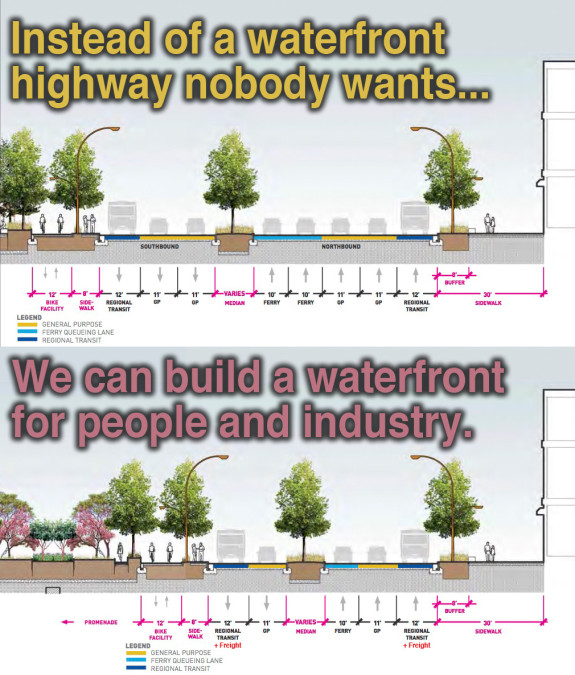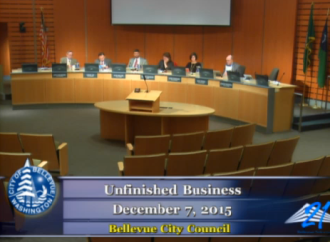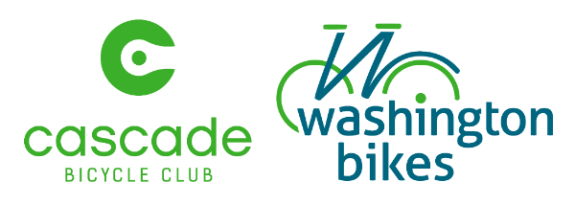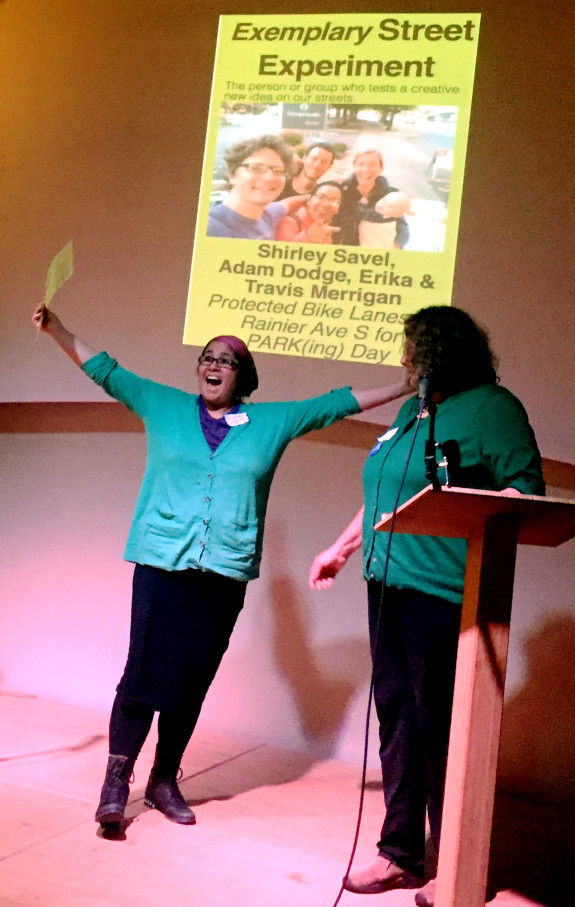
So many of you submitted comments shocked by the gigantic waterfront highway presented in the most recent Waterfront Seattle plans that you triggered a requirement mandating the city study a road design that has fewer lanes to cross between the downtown core and the rebuilt waterfront.
The proposed eight-lane road is so wide that people who move slower — like children, many elderly people or people with mobility issues — won’t be able to cross the whole street in one signal. They will have to cross to the center median and wait a couple minutes before continuing across to finally reach the other side. Or they’ll just get stuck in the middle of traffic when the light turns green, a terrifying and dangerous situation.
Obviously, this is not acceptable. So good job submitting your comments! You all were very clear about the problem, and you demanded a solution from our city and state. And they heard you, so now they are studying an option that removes the … transit lanes?!?
That’s right. Even though essentially nobody asked to get rid of the transit lanes, that’s the study we’re getting. Because everything about this process is backwards.
In a short bullet point during a mostly-fireworks-free Transportation Committee meeting last week, a planner for the Waterfront Seattle project mentioned that they were adding a study to analyze the impact of removing the promised transit-only lanes on the planned Alaskan Way surface street. These transit lanes are vital for moving all the buses that currently use the viaduct, including most service to West Seattle.
But the comment did not go unnoticed. Transit boosters, including Zach Shaner at Seattle Transit Blog, heard the new bit of news and asked, and I’m roughly paraphrasing here, “What the fuck?”
Well, it turns out the problem stems from an agreement between the Port of Seattle and the State. Zach at STB explains: (more…)












